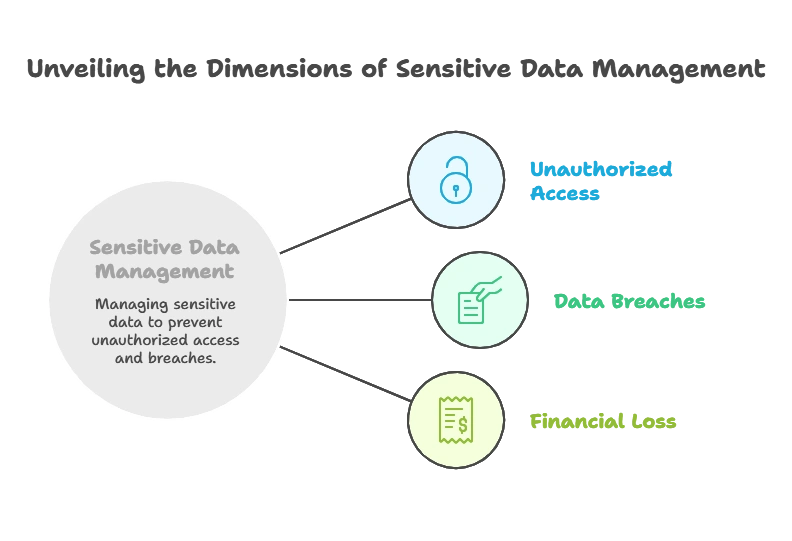Managing Secrets and Sensitive Data
In this chapter, we'll explore the importance of managing secrets and sensitive data in Go applications. We'll cover various techniques and best practices for securely handling credentials, API keys, passwords, and other sensitive information throughout the development lifecycle.
Understanding the Importance of Secure Data Management
Introduction to Sensitive Data
Sensitive data includes any information that, if compromised, could lead to unauthorized access, data breaches, financial loss, or reputational damage. Examples include passwords, API keys, database credentials, and cryptographic keys.
Risks of Mishandling Sensitive Data
Mishandling sensitive data can have severe consequences, including:
- Unauthorized access to sensitive systems or resources.
- Data breaches resulting in loss of customer trust and legal consequences.
- Financial loss due to fraudulent activities or regulatory fines

Best Practices for Managing Secrets in Go Applications
Avoiding Hardcoding Secrets
Hardcoding secrets directly into source code is a common but risky practice. Instead, use environment variables or external configuration files to store sensitive information outside the codebase.
Example: Using Environment Variables
package main
import (
"fmt"
"os"
)
func main() {
dbUser := os.Getenv("DB_USER")
dbPassword := os.Getenv("DB_PASSWORD")
// Use dbUser and dbPassword for database connection
fmt.Println("DB User:", dbUser)
fmt.Println("DB Password:", dbPassword)
}
Using Secret Management Tools
Secret management tools like Vault, AWS Secrets Manager, or Google Cloud Secret Manager provide secure storage and management of secrets. These tools offer features like encryption, access control, and audit logging.
Example: Using AWS Secrets Manager
package main
import (
"fmt"
"github.com/aws/aws-sdk-go/aws"
"github.com/aws/aws-sdk-go/aws/session"
"github.com/aws/aws-sdk-go/service/secretsmanager"
)
func main() {
// Create an AWS session
sess := session.Must(session.NewSession())
// Create a Secrets Manager client
svc := secretsmanager.New(sess)
// Retrieve secret value
input := &secretsmanager.GetSecretValueInput{
SecretId: aws.String("mySecret"),
}
result, err := svc.GetSecretValue(input)
if err != nil {
fmt.Println("Error retrieving secret:", err)
return
}
fmt.Println("Secret:", *result.SecretString)
}
Encryption and Hashing
Encrypting sensitive data and using cryptographic hash functions for passwords can add an extra layer of security. Tools like bcrypt and argon2 are commonly used for secure password hashing in Go.
Example: Hashing Passwords with bcrypt
package main
import (
"fmt"
"golang.org/x/crypto/bcrypt"
)
func main() {
password := "mysecretpassword"
// Hash password
hashedPassword, err := bcrypt.GenerateFromPassword([]byte(password), bcrypt.DefaultCost)
if err != nil {
fmt.Println("Error hashing password:", err)
return
}
fmt.Println("Hashed Password:", string(hashedPassword))
}
Secure Development Practices
Limiting Access to Secrets
Follow the principle of least privilege by restricting access to sensitive data only to those who need it. Implement access controls, role-based access management (RBAC), and auditing mechanisms to monitor and control access to secrets.
Regularly Rotating Secrets
Regularly rotate API keys, passwords, and other credentials to minimize the risk of exposure due to long-term compromise. Implement automated processes for secret rotation and ensure that old secrets are securely revoked or deleted.
In conclusion, managing secrets and sensitive data is a critical aspect of secure software development. By following best practices such as avoiding hardcoding secrets, using secret management tools, encryption, and secure development practices, you can minimize the risk of data breaches and ensure the confidentiality and integrity of your applications. Remember to regularly review and update your security measures to stay ahead of evolving threats and protect your data effectively. Happy coding !❤️
